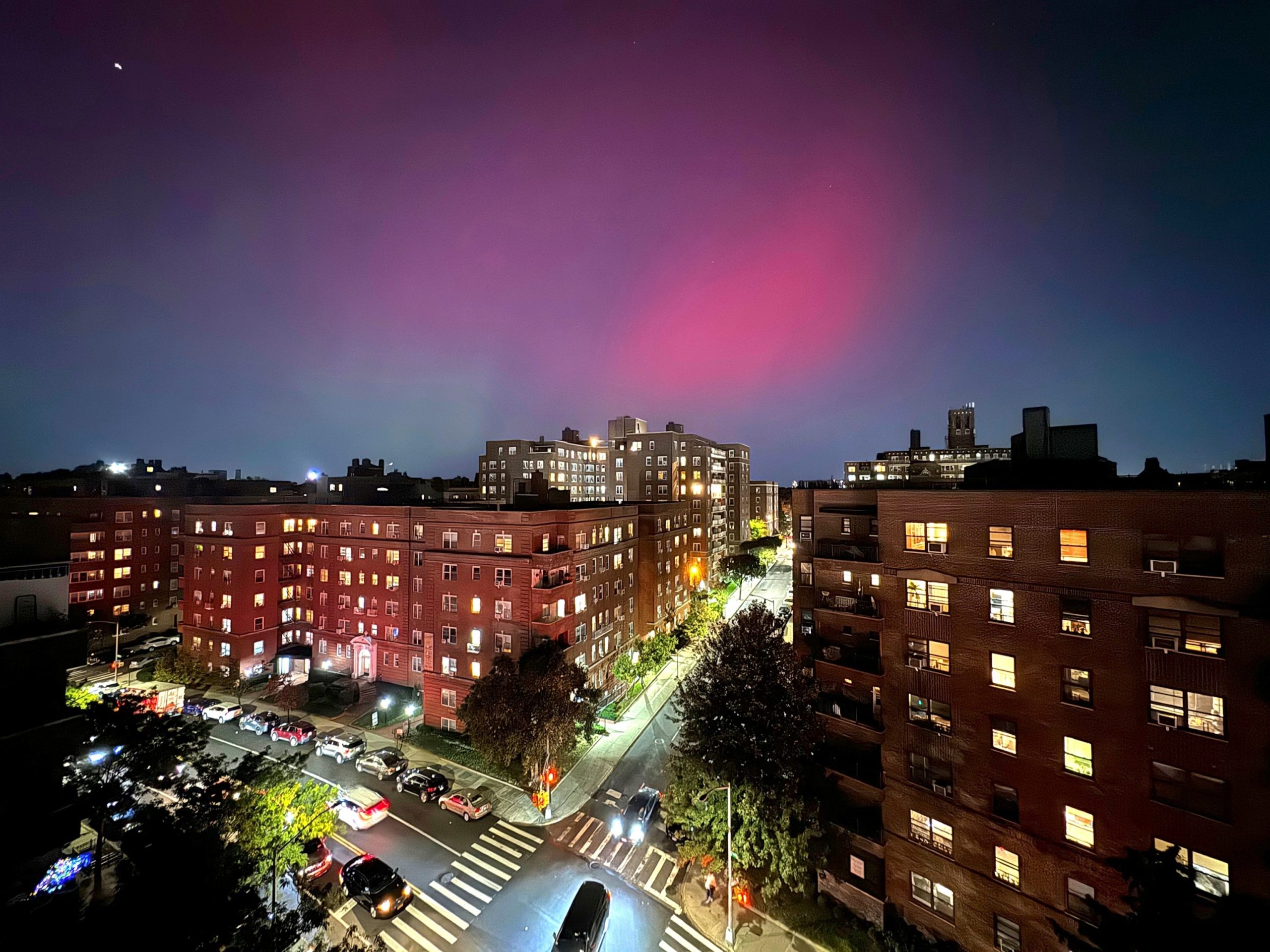A “severe” solar storm has made the northern lights visible in the U.S. much farther south than usual, bringing a stunning display of hues across the eastern U.S. Thursday evening.
Pink, purple and green skies were seen from Maine to New York, Washington, D.C., and beyond as the was sun setting.
The radiant storm, however, poses the potential to disrupt modern technology, according to the National Oceanic and Atmospheric Administration.
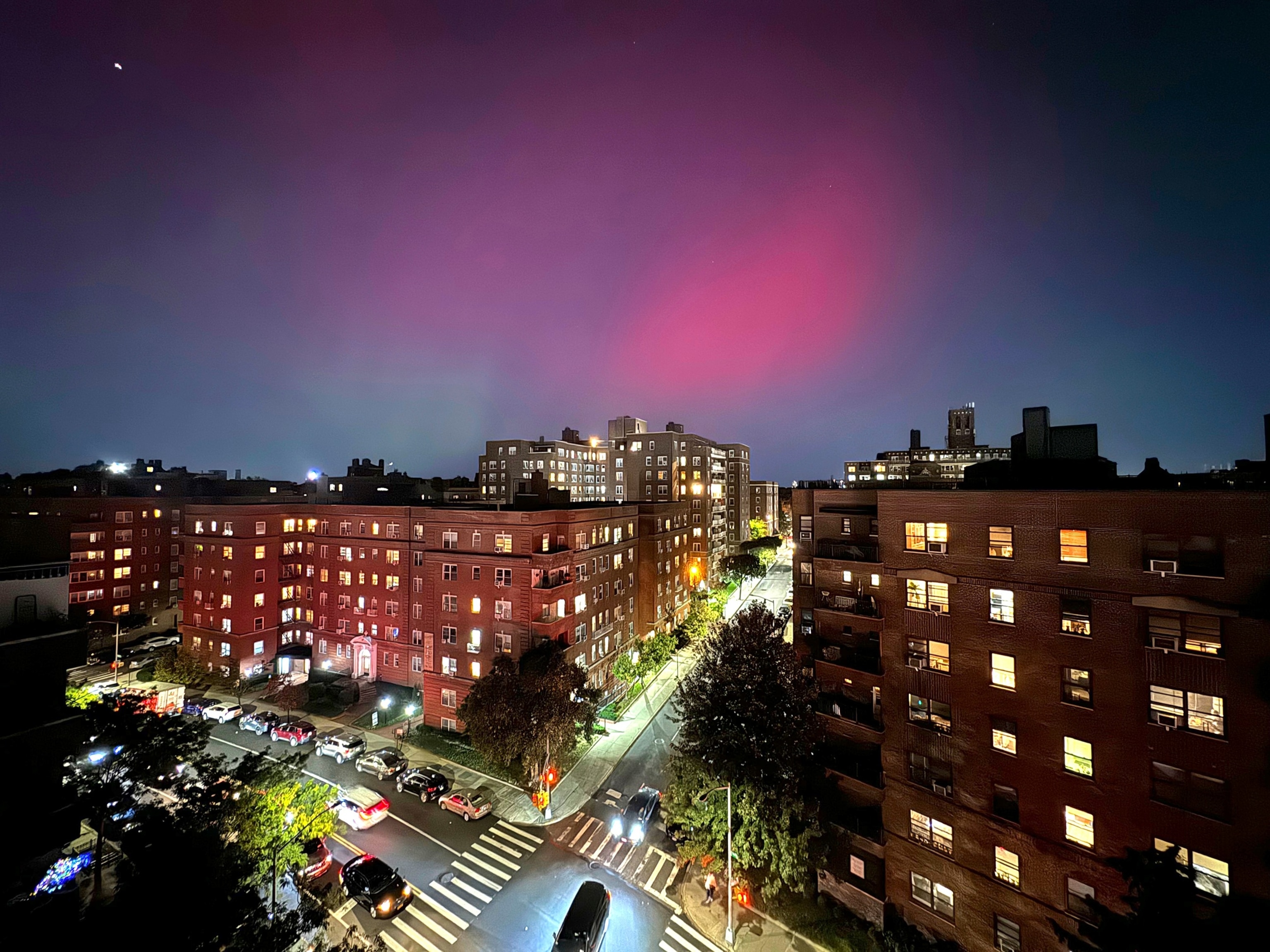
The Northern lights glow in the night sky above apartment buildings in the Queens borough of New York, on Oct. 10, 2024.
Daniel P. Derella/AP
A fast-moving coronal mass ejection (CME) — a powerful burst of magnetized plasma from the sun’s corona — erupted from the sun on Tuesday night, prompting NOAA’s Space Prediction Center to issue a rare G4 geomagnetic storm watch, indicating “detrimental impacts” to critical technology and possible widespread voltage control problems, according to NOAA.
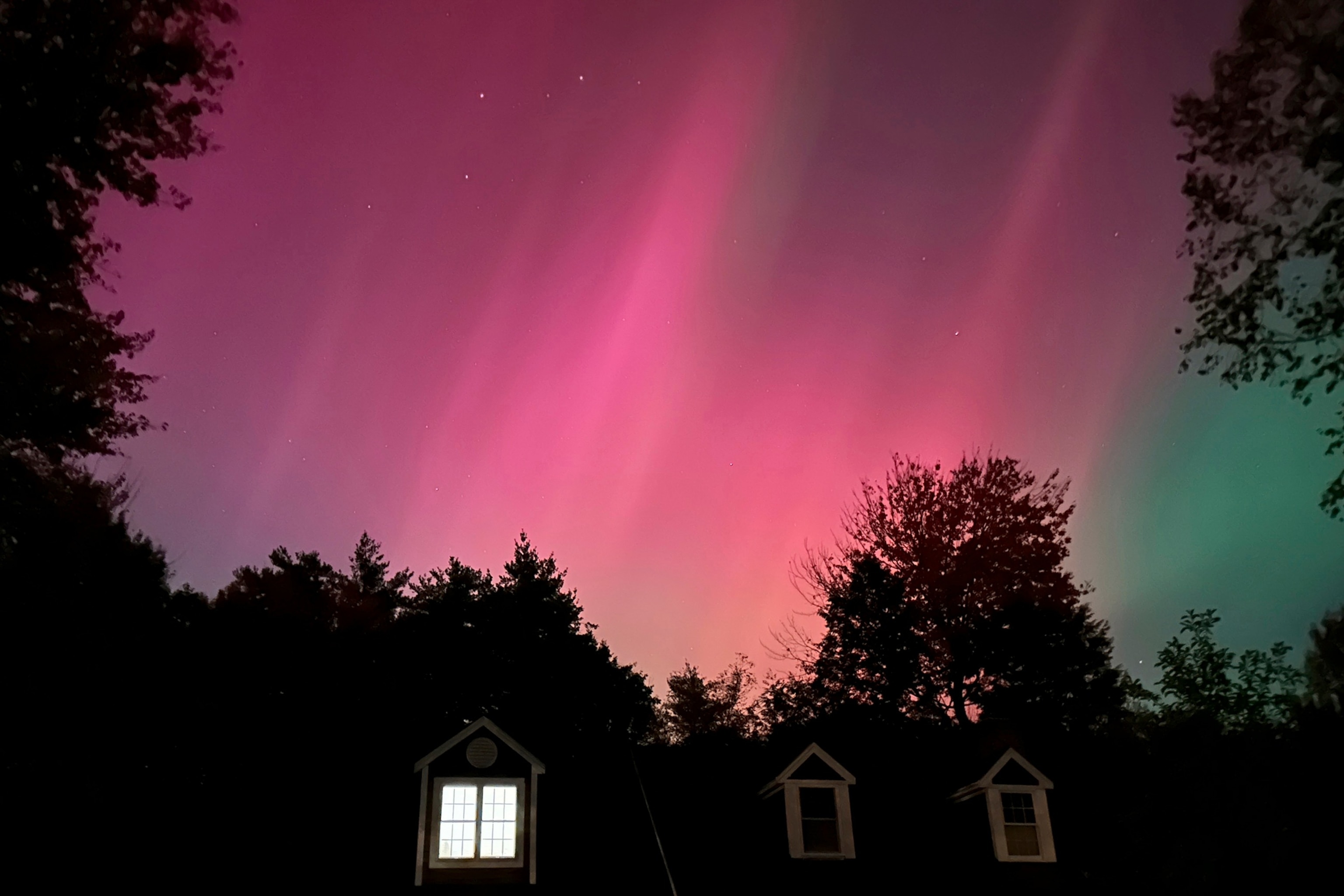
An aurora borealis, also known as the northern lights, is seen on Oct. 10, 2024, in Falmouth, Maine.
David Sharp/AP
The CME caused a moderate solar storm here on Earth on Thursday and Friday, according to NOAA.
A solar, or geomagnetic, storm occurs when the charged particles within solar wind interact with Earth’s magnetic field, causing a significant disturbance, according to NASA.
One of the most common manifestations of a CME’s impact on Earth are the emergence of aurora borealis, or northern lights. The interaction between the CME and Earth’s magnetic field, or magnetosphere, creates ribbons of light in the far northern skies that glow green, pink and other colors
The stronger the solar storm, the farther south the northern lights can be seen. But the farther south you go, a more reddish hue is visible rather than green, because the curvature of the Earth causes the particles to interact higher in the atmosphere.
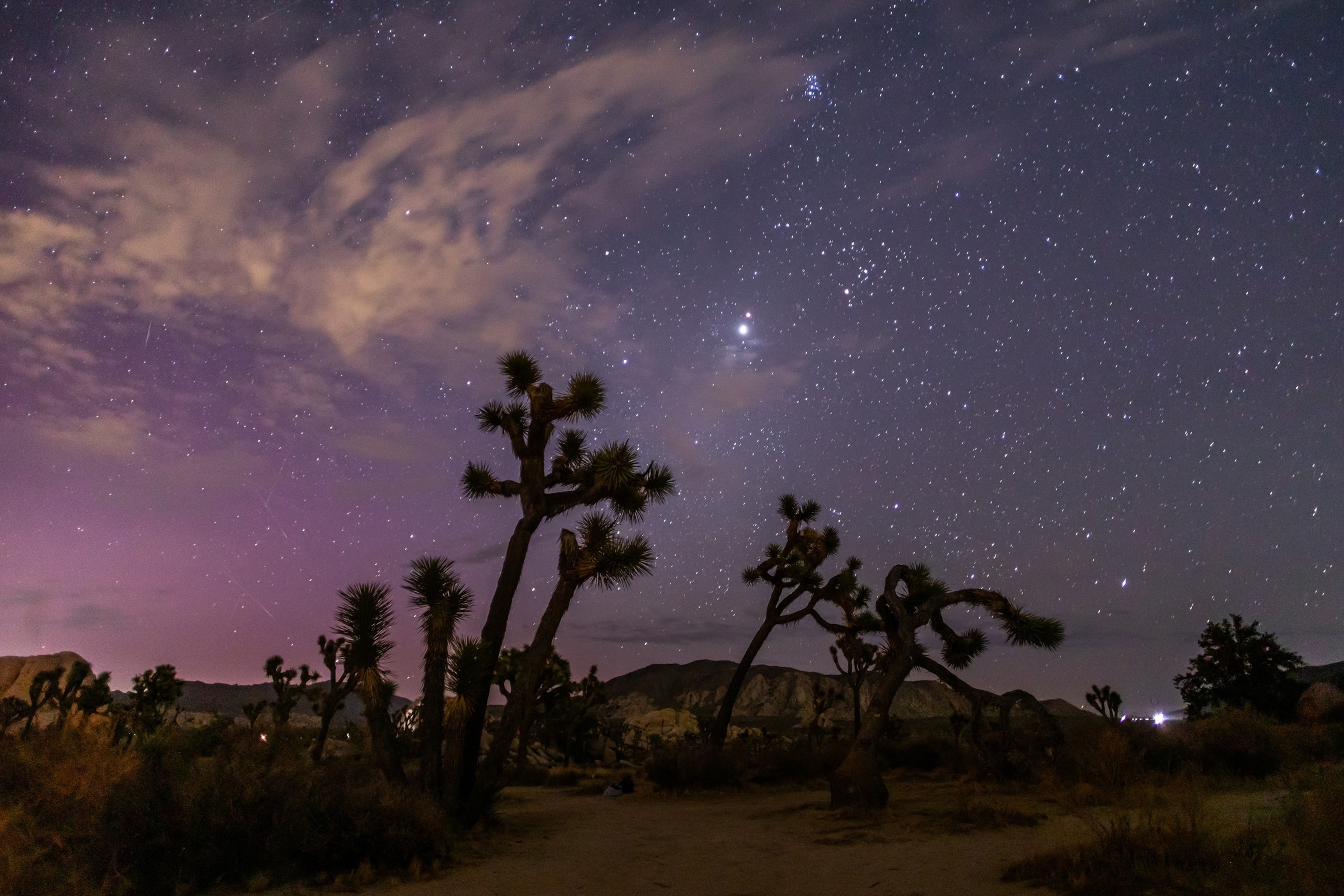
Northern Lights (Aurora Borealis) illuminate the sky above Joshua Tree National Park during the Perseids Meteor shower in Joshua Tree, California, early on August 12, 2024.
Apu Gomes/AFP via Getty Images
The northern lights were visible over much of the northern half of the U.S. on Thursday and could extend as far south as Alabama to Northern California, according to NOAA.
NOAA ranks geomagnetic storms on a five-point scale, with those rated G5, the strongest, being capable of widespread voltage control problems that could lead to power blackouts or even the complete collapse of some power grid systems. In this scenario, auroras could possibly be seen as far south as Florida and southern Texas.
Intense geomagnetic storms can also bombard Earth with subatomic particles, potentially disrupting navigation systems by interfering with radio and GPS signals and electric power networks, according to NOAA.
Geomagnetic storms can also add energy to currents in Earth’s magnetic field that can increase distribution of density in the upper atmosphere and cause extra drag on low-orbiting satellites.
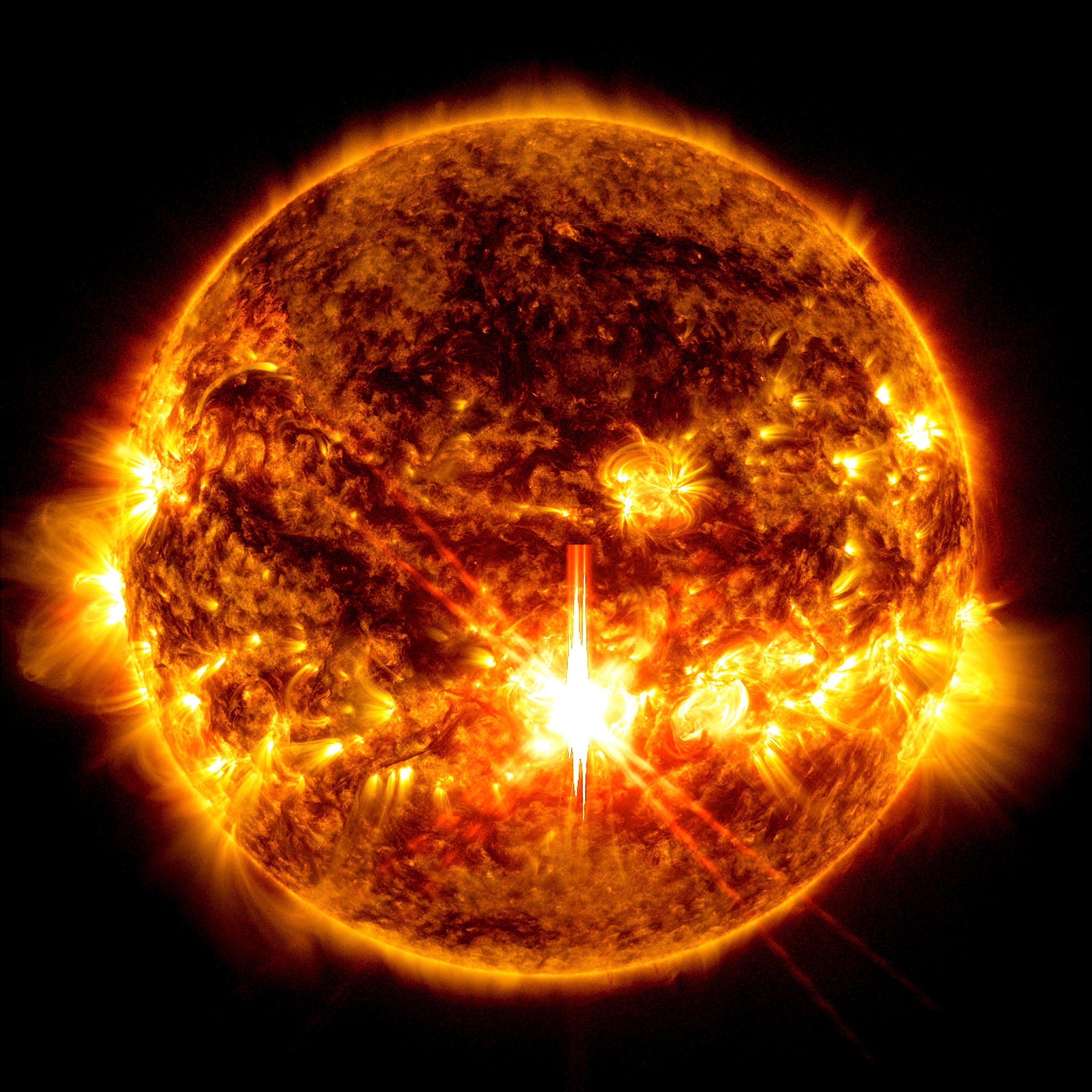
This photo provided by NASA, taken by the Solar Dynamics Observatory, shows a solar flare, the bright flash in the center of the image on Oct. 3, 2024.
Solar Dynamics Observatory/NASA via AP
Everyday life is typically not severely affected, and power grids are equipped to handle slight disruptions to anomalous activity on high-voltage transmission lines, Shawn Dahl, coordinator for NOAA’s Space Weather Prediction Center, told ABC News earlier this year.
Last month, the northern lights display stretched as far south as Arizona, Mississippi and Texas. Earlier this week, aurora borealis could be seen in Alaska.
This busy series of northern lights activity will soon come to a peak as the sun reaches its solar maximum stage in the coming months.
Every 11 years, the sun’s magnetic field reaches its solar maximum, in which the number of solar flares is at its highest, according to NOAA.
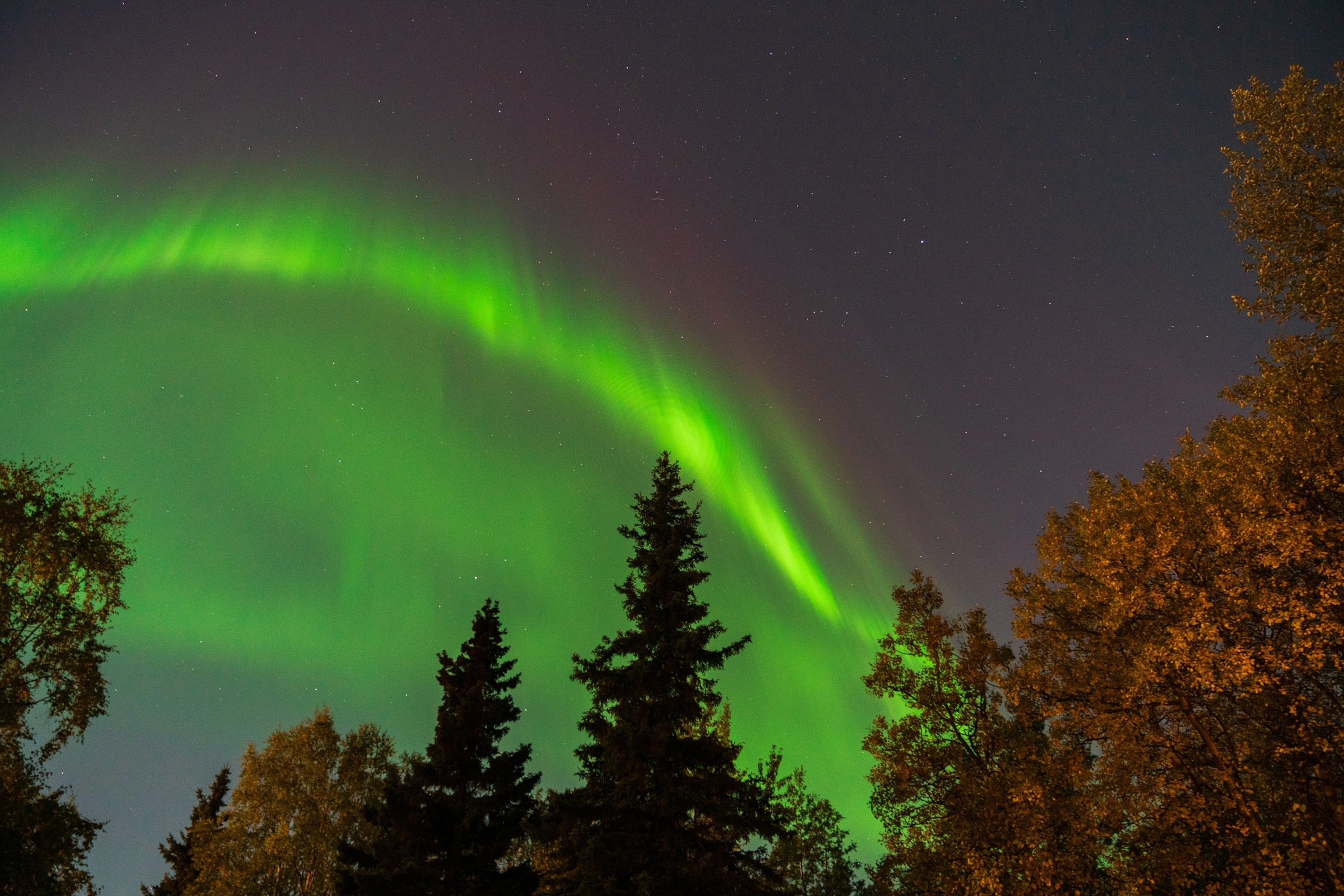
Northern lights (Aurora Borealis) illuminate the sky in Alaska, September 16, 2024.
Hasan Akbas/Anadolu via Getty Images
Earth is currently approaching the peak of Solar Cycle 25, in which more sunspots with intense magnetic activity are expected.
Impactful space weather events are possible throughout 2024, with the current cycle expected to peak between November 2024 and March 2026, according to NOAA.
The Northern Lights, also known as the Aurora Borealis, are a stunning natural phenomenon that typically occur in high-latitude regions such as Alaska, Canada, and Scandinavia. However, during rare and intense solar storms, these colorful lights can be visible much further south, including in the eastern United States.
Solar storms are caused by eruptions on the sun’s surface that release massive amounts of energy and charged particles into space. When these particles interact with the Earth’s magnetic field, they can produce spectacular displays of light in the form of the Northern Lights.
On rare occasions, particularly strong solar storms can push the auroras further south than usual, making them visible in regions where they are not typically seen. This was the case recently when a powerful solar storm created a dazzling display of Northern Lights in the eastern United States.
During this event, residents in states such as Maine, New York, and even as far south as Virginia were treated to a rare glimpse of the Northern Lights dancing across the night sky. Many people took to social media to share their photos and videos of the event, capturing the beauty and wonder of this natural spectacle.
While sightings of the Northern Lights in the eastern US are rare, they serve as a reminder of the interconnectedness of our planet with the larger solar system. These events also highlight the importance of monitoring solar activity and its potential impact on Earth’s magnetic field.
For those who missed out on this recent display, there is still hope for future sightings of the Northern Lights in the eastern US. Solar activity is known to follow an 11-year cycle, with periods of increased activity leading to more frequent and intense displays of auroras. So keep an eye on space weather forecasts and be ready to witness the magic of the Northern Lights right in your own backyard.
